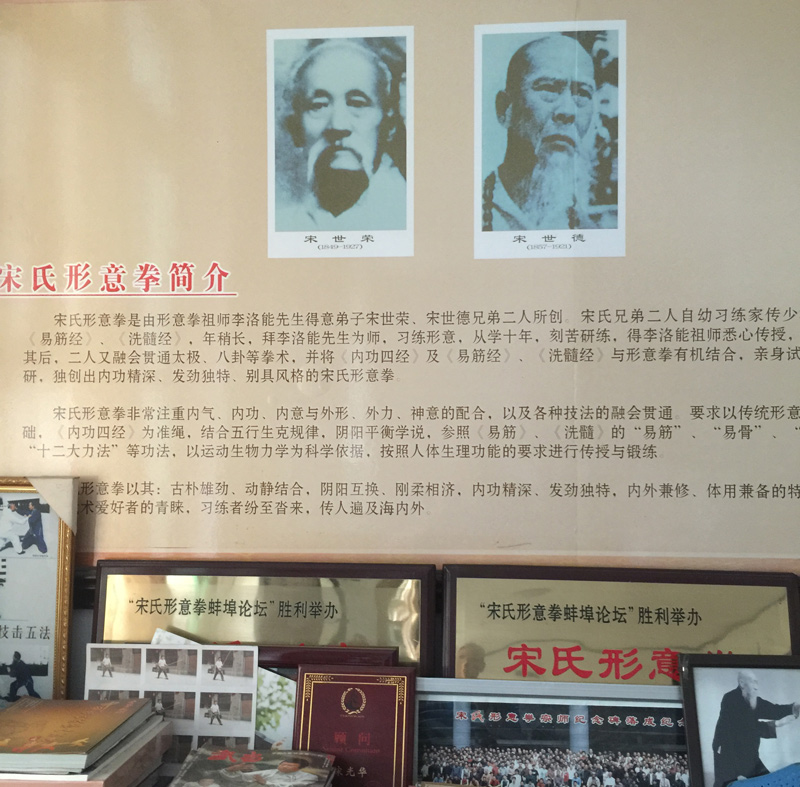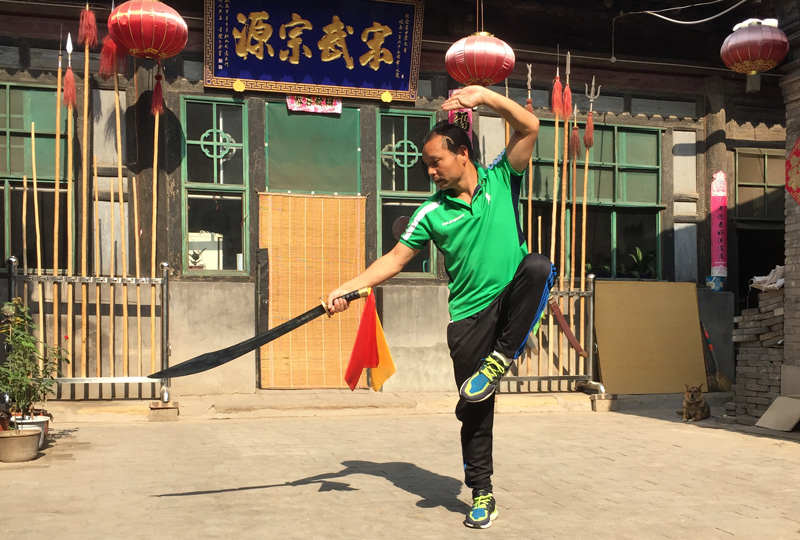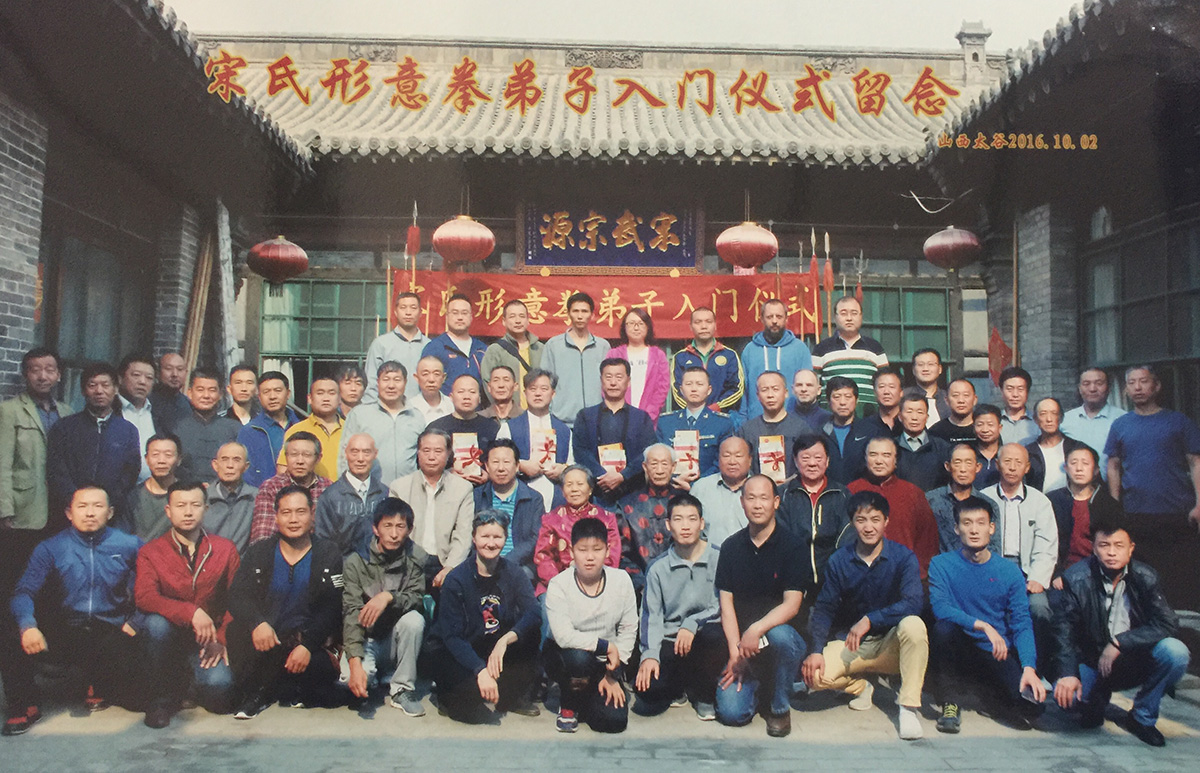Song Style Xing Yi Quan
Song Style Xing Yi Quan
Dasifu teaches Song Style Xing Yi Quan and traditional Xingyi Sword. Dasifu studied under Song Guang Gua.
Xing Yi Quan is one of the three most famous styles of internal wushu.It is believed to have been developed by Song Dynasty wushu hero and general, Yue Fei and gained wide spread popularity during the Qing Dynasty. Xing Yi Quan uses Five Element Theory in its application and relies on the Six Harmonies in its practice and cultivation.The Six Harmonies can be broken down into the Three External Harmonies and the Three Internal Harmonies:
Three External Harmonies:
1.The arms and legs in synchronicity and harmony.
2.The elbows and knees in synchronicity and harmony.
3.The shoulders and hips in synchronicity and harmony.
Three Internal Harmonies:
1.The heart/mind acts in harmony with the will/intention.
2.The will/intention acts in harmony with the internal energy.
3.The internal energy acts in harmony with the power.

In Xing Yi Quan great emphasis is placed on the intention leading the power through the body – the body then must work as one cohesive unit to allow for full expression of the explosive power.The intention, internal power, and external movement must coordinate and be synchronized – requiring total focus.
Health Benefits of Xing Yi Quan
As in all systems of wushu practice, the fundamentals are most important.And in Xing Yi Quan having correct posture is paramount.In Xing Yi Quan one starts by first learning the correct posture which is maintained throughout all different aspects of the practice; as can be gleaned from the Three External Harmonies.When practicing Xing Yi Quan one must keep the neck and back straight while at the same time being sure not to tense the muscles and tendons; the hips must be relaxed and dropped while the tailbone is tucked in so that the entire spine is straight – from the base of the skull, to the tip of the tailbone.This practice allows for a natural realigning of the spine as the muscles and tendons in the back begin to relax.For this reason it also promotes a release of tension that may be built up in the neck, shoulders, hips, and waist.
The practice of Xing Yi Quan is also helpful in building up the strength of the leg muscles, particularly the thigh muscles.It is also helpful in strengthening the tendons and ligaments of the knees and ankles.As Xing Yi Quan focuses on the synchronization of the intention and body, and requires focus, one can certainly improve their focus as well as mental organization.In the standing posture and moving practices deep dantian breathing is important to maintain which is helpful in lowering stress and bringing clarity of mind.

The Practice
When beginning to learn Xing Yi Quan one must first learn the correct posture and alignment – focusing first on the Three External Harmonies and then gradually moving into the Three Internal Harmonies.When first beginning, the correct posture is first taught.After the posture is correct and familiar and firm foundation in the leg-work is then learned.One must build up the muscle and tendon strength in the legs and be able to perform large, low stepping that is also quick.Once a practitioner is familiar with these fundamentals, they can then go on to learn the next step which is the five basic fists that comprise the Xing Yi System.As Xing Yi Quan uses Five Element Theory in its application and practice Eech of the different fists corresponds to one of the five elements (water, wood, fire, metal, and earth).Each of these different fists has its individual practice.Once one is familiar with the five different fists, they can thenmove on to learning the Five Elements Linking Form and later to the 12 Animals of Xing Yi Quan.

- LAST DAY : 22-09-2018 Donate Now
RECENT CAUSES
-
Shaolin Kung Fu
The Zhongyue Shaolin Temple’s gung fu classes focus on traditional Shaolin style training. Students learn basic and advanced fighting techniques and...
-
Taijiquan
TAIJIQUAN – Tai Chi Chuan – Chen Style “Grand Ultimate Fist.” A Chinese internal art form that is based in the principles of Yin and Yang. ...
-
Qigong
Qigong is an ancient form of chinese “calastenics” designed to help a practicioner build their qi both for use in kung fu as well as for excellent...

Leave a Reply